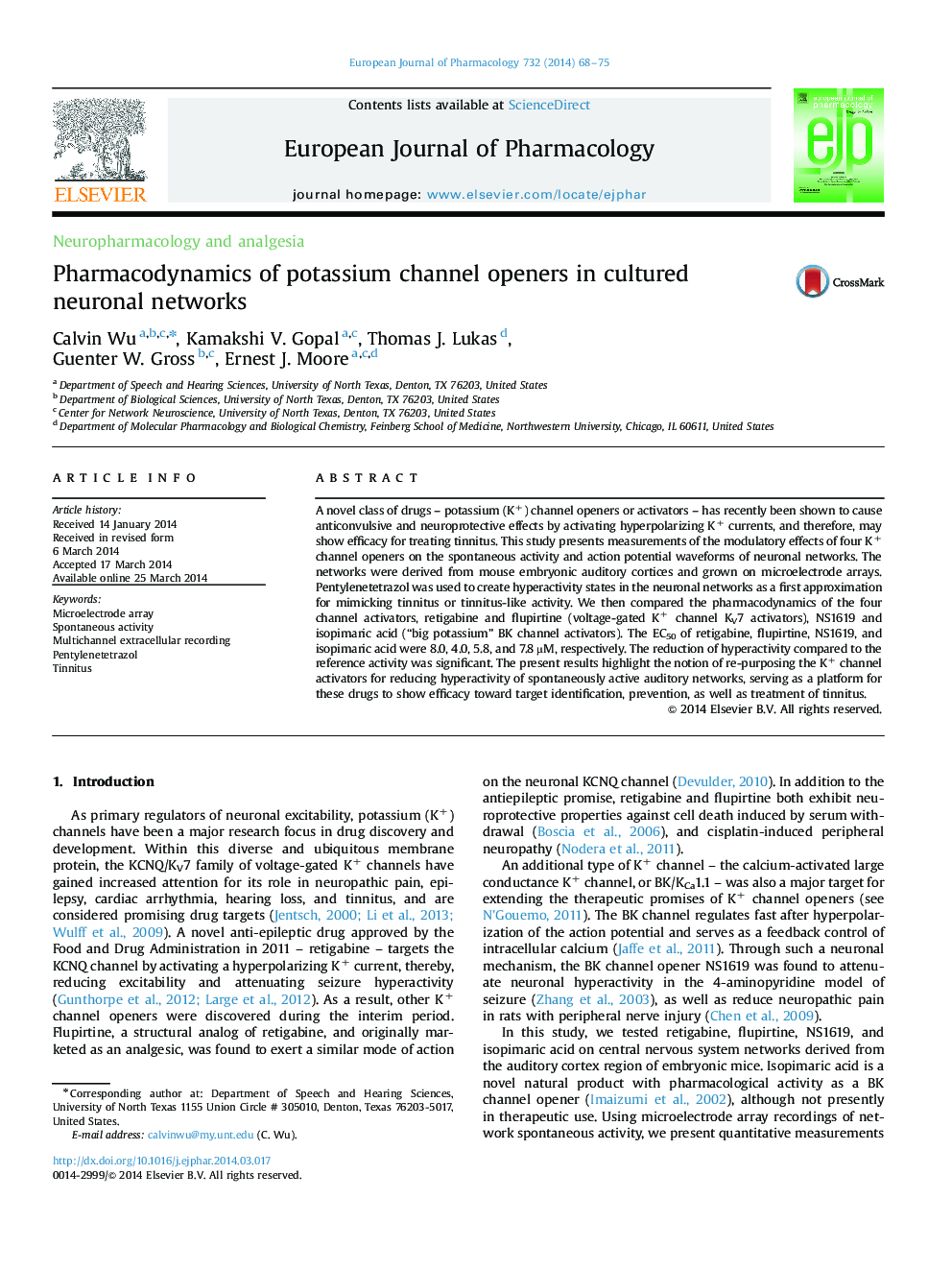| Article ID | Journal | Published Year | Pages | File Type |
|---|---|---|---|---|
| 5828013 | European Journal of Pharmacology | 2014 | 8 Pages |
Abstract
A novel class of drugs - potassium (K+) channel openers or activators - has recently been shown to cause anticonvulsive and neuroprotective effects by activating hyperpolarizing K+ currents, and therefore, may show efficacy for treating tinnitus. This study presents measurements of the modulatory effects of four K+ channel openers on the spontaneous activity and action potential waveforms of neuronal networks. The networks were derived from mouse embryonic auditory cortices and grown on microelectrode arrays. Pentylenetetrazol was used to create hyperactivity states in the neuronal networks as a first approximation for mimicking tinnitus or tinnitus-like activity. We then compared the pharmacodynamics of the four channel activators, retigabine and flupirtine (voltage-gated K+ channel KV7 activators), NS1619 and isopimaric acid (“big potassium” BK channel activators). The EC50 of retigabine, flupirtine, NS1619, and isopimaric acid were 8.0, 4.0, 5.8, and 7.8 µM, respectively. The reduction of hyperactivity compared to the reference activity was significant. The present results highlight the notion of re-purposing the K+ channel activators for reducing hyperactivity of spontaneously active auditory networks, serving as a platform for these drugs to show efficacy toward target identification, prevention, as well as treatment of tinnitus.
Related Topics
Life Sciences
Neuroscience
Cellular and Molecular Neuroscience
Authors
Calvin Wu, Kamakshi V. Gopal, Thomas J. Lukas, Guenter W. Gross, Ernest J. Moore,
